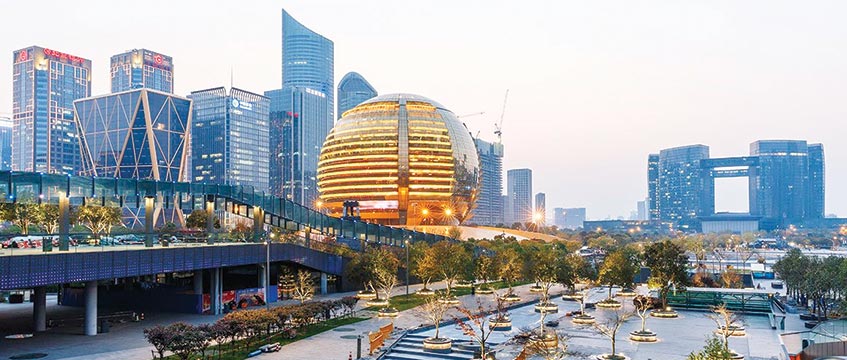China, India and the Middle East are emerging as the regions most likely to weather the storm against global market disruption, challenging rival Western cities in the US and Europe as hotspots for long-term investment, according to Savills.
The Resilient Cities Index, part of Savills’ Impacts research programme, revealed that second-tier cities in China, India and the Middle East are areas most likely to grow in the future amid market disruption around the world.
The report, which analyses which cities will be able to withstand or embrace technological, demographic and leadership changes facing global real estate over the next 10 years, found that Chinese cities in particular will grow to become strongholds for opportunity.
Within 10 years, Savills predicts that Chinese cities will occupy nearly half (43) of all 100 spots in the agent’s Resilient Cities Index.
Eight “challenger cities”, which are locations forecast to jump at least 10 places and break into the top 50 most resilient cities territory, have been identified. Three are located in China (Hangzhou, Nanjing and Ningbo), three are in India (Delhi, Mumbai and Bengaluru) and two are in Saudi Arabia (Riyadh and Jeddah).
These cities have been identified as challengers because they are more likely to respond faster and more flexibly to swift changes in technology and society.
Explaining the opportunity for real estate companies in these locations, Savills’ director of world research Sophie Chick said these cities are more likely to see substantial growth in GDP and income per household, while the proportion of non-working age to working age people will fall or increase at a lower rate than most other major cities.
“This indicates that they are set to be young, prosperous and able to adapt to changes in the way the world operates at a faster pace than some better-known locations,” she said.
Meanwhile, cities in the US and EU will be less successful in weathering global market disruption compared with their Eastern competitors, according to the report.
Aside from New York, London and Los Angeles, which will all to keep their first, third and fourth positions (respectively) in the index within the next 10 years, all other European and US cities are set to fall further down the league table, while seven of the nine cities located outside of the US and Europe are set to move up the top 20 league table.
Tokyo is predicted to retain its position as the second most resilient city in the world by 2028 and Singapore is expected to drop from 13 in 2018 to 17 in 2028.
Savills’ head of global capital markets Simon Hope said “long-established global cities” will be able to withstand global changes over the next decade and will still be considered “safe havens” for capital.
But as a result, their assets will become expensive and highly sought after, leading Pope to predict that the eight challenger cities could become more desirable destinations for investors.
“While not without risk, these cities are set to accelerate up the ranks as they demonstrate their resilience to the challenges ahead and investors should start investigating how to secure a footing in these markets if they’re willing to sit tight and take a long-term view,” he said.
Furthermore, the growth in the price of luxury homes across the globe is falling as growth in the sector is set to slow.
Price growth across the world’s leading prime city housing markets slowed significantly in the second half of 2018, according to Savills.
Its World Cities Prime Residential Index showed growth slowed to 0.4% in the second half of 2018, rising by just 2.3% across 2018 as a whole. This compares to annual growth of 3.3% in 2017.
Chick said: “Prime residential real estate values are settling into a pattern of slower, steadier price growth and we do not expect to see a repeat of the double-digit annual price growth seen pre-GFC.
“Back in 2007, spiralling global wealth generation and competition for trophy assets in established and emerging world cities saw our prime sales index rise by 15.4% in the year.
“But while growth is now expected to slow, we expect the search for security of tenure and title in cities where the world’s high-net-worth individuals wish to live and do business to underpin values.”
Tech in the city
New York has been ranked as the globe’s technology centre in Savills’ Tech Cities Index. San Francisco and London were ranked as the second- and third-best destinations for technology.
The report forecasts that cities that fall into the Tech Cities Index will see their gross domestic product rise by 36% in the next decade, compared with 19% across other developed cities.
The top tech cities (from 1 to 10) were: New York, San Francisco, London, Amsterdam, Boston, Singapore, Los Angeles, Austin, Stockholm, and Copenhagen.
To send feedback, e-mail lucy.alderson@egi.co.uk or tweet @LucyAJourno or @estatesgazette











